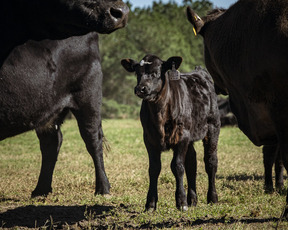
Producers who have not yet completed their acreage report for 2024 should make an appointment with this office before July 15, 2024.
Crops including, but not limited to, the following: spring seeded alfalfa, perennial forage crops, native grazing and cover crops planted for soil health should be reported by July 15, 2024.
The number of new disaster programs and other Farm Bill mandated programs require an acreage report in order to comply with program eligibility requirements. An acreage report documents a crop grown on a farm or ranch and its intended uses. Filing an accurate and timely acreage report for all crops and land uses, including failed acreage and prevented planted acreage, can prevent the loss of benefits. FSA staff is available to assist producers in completing acreage reports, including providing maps.
To file a crop acreage report, producers need to provide:
- Crop and crop type or variety and seeding rates
- Intended use of the crop
- Number of acres of the crop
- Map with approximate boundaries for the crop
- Planting date(s)
- Planting pattern, when applicable
- Producer shares
- Irrigation practice(s)
- Acreage prevented from planting, when applicable
If a producer acquires additional acreage after the acreage reporting date, then the acreage must be reported no later than 30 calendar days after purchase or acquiring the lease. Appropriate documentation must be provided to the county office.
|
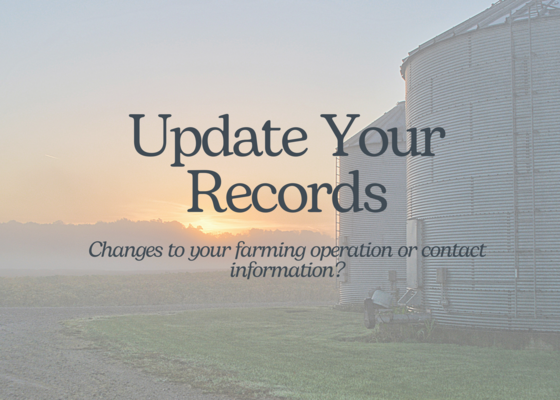

The Farm Service Agency (FSA) is hiring a Temporary Program Technician in our Campbell County Office. This position will work up to 40 hours per week.
The position is currently open, closing once the position is filled.
Duties will include:
- Carrying out office activities and functions pertaining to common processes for FSA program administration
- Utilizing various web-based software application to maintain producer information, data entry, and GIS
- Using a high degree of initiative and judgment in planning and carrying out assigned tasks and resolving problems encountered
The Farm Service Agency is an exciting and rewarding place to start, build and/or continue your career. Be part of our team and support the well-being of American agriculture and the American public. You will receive on-the-job training intended to further develop your talent, skills, and abilities to successfully administer farm programs.
A high school diploma or GED, along with strong computer skills and customer service experience are required. Basic familiarity with agriculture is preferred.
For more information, or to apply, contact Pam at 307-682-8843 or pamela.s.smith@usda.gov
|
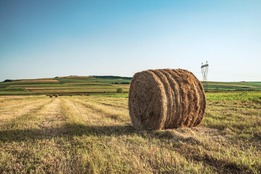 |
|
Producers with NAP hay coverage in 2023 need to report their harvested production. FSA can supply maps for you to record your harvested production on a field-by-field basis. Timely and accurately reporting these yields is key to your farm’s Actual Production History (APH) and indemnity payments. Production reports are due July 15th. |
The wool LDP rates have continued to stay at .40 cents per pound. If you have not received an LDP for your 2024 wool, you may still be eligible if the following applies:
- The CCC-633EZ,page 1, must be filed with the FSA office before your commodity is sold and documentation of when beneficial interest was lost.
- If you still have a commodity at your farm or ranch, you may apply for a loan or LDP. The payment will be based on the certification of weights and the rate in effect on the date you bring this information to the FSA office and complete the application.
- Your commodity does not have to be sold to receive benefits. Receipts from approved storage facilities will be accepted and the LDP rate used will be the date the receipts are received and page 4 of the application completed.
If you have any questions please feel free to call the office.
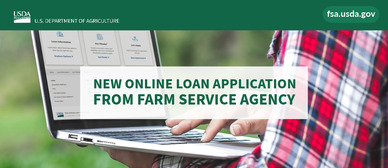
The U.S. Department of Agriculture (USDA) announced today that most farm loan borrowers will soon be able to make payments to their direct loans online through the Pay My Loan feature on farmers.gov in early February. Pay My Loan is part of a broader effort by USDA’s Farm Service Agency (FSA) to streamline its processes, especially for producers who may have limited time during the planting or harvest seasons to visit a local FSA office; modernize and improve customer service; provide additional customer self-service tools; and expand credit access to assist more producers.
On average, local USDA Service Centers process more than 225,000 farm loan payments each year. Pay My Loan gives most borrowers an online repayment option and relieves them from needing to call, mail, or visit a Service Center to pay their loan installment. Farm loan payments can now be made at the borrower’s convenience, on their schedule and outside of FSA office hours.
Pay My Loan also provides time savings for FSA’s farm loan employees by minimizing manual payment processing activities. This new service for producers means that farm loan employees will have more time to focus on reviewing and processing new loans or servicing requests.
The Pay My Loan feature can be accessed at farmers.gov/loans. To use the payment feature, producers must establish a USDA customer account and a USDA Level 2 eAuthentication (“eAuth”) account or a Login.gov account. This initial release only allows individuals with loans to make online payments. For now, borrowers with jointly payable checks will need to continue to make loan payments through their local office.
FSA has a significant initiative underway to streamline and automate the Farm Loan Program customer-facing business process. For the over 26,000 producers who submit a direct loan application annually, FSA has made various improvements including:
- The Online Loan Application, an interactive, guided application that is paperless and provides helpful features including an electronic signature option, the ability to attach supporting documents such as tax returns, complete a balance sheet, and build a farm operating plan.
- The Loan Assistance Tool that provides customers with an interactive online, step-by-step guide to identifying the direct loan products that may be a fit for their business needs and to understanding the application process.
A simplified direct loan paper application, which reduced loan applications by more than half, from 29 pages to 13 pages.
|
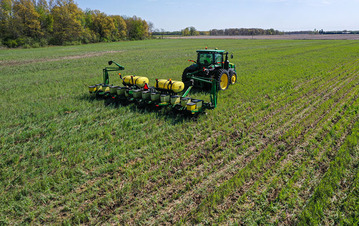
There are several USDA Farm Bill and Inflation Reduction Act (IRA) programs available to residents of Campbell County through the Natural Resources Conservation Service (NRCS) and the Farm Services Agency (FSA) to make environmental improvements on your property. These all have different sign up deadlines and funding cycles. Below is a summary of conservation programs that are currently available.
The Environmental Quality Incentive Program (EQIP) is the main financial assistance program for both Farm Bill and IRA funding. Under this program we can help fund projects such as livestock water development, fencing, invasive grass treatment, high tunnels, pollinator seedings and many more things. IRA funding is limited to projects that will sequester carbon in the soils. EQIP has a continuous sign up period which means you can sign an application anytime of the year. EQIP funding is limited to $450,000 per person or entity during each Farm Bill. The actual funding of projects only happens once or twice a year depending on when we receive funding from Congress, usually late winter, or early spring.
The Conservation Stewardship Program (CSP) is a five year program that compensates agricultural producers to increase their level of environmental management on their land through certain enhancements. CSP is funded through both Farm Bill and IRA allocations. Things that qualify for CSP include haying in a wildlife friendly manner, rangeland monitoring and pollinator seedings. This program pays an annual payment up to $40,000 per year for five years. Like EQIP, CSP has a continuous application period with contract approval happening in late spring.
Agricultural Management Assistance is a Farm Bill program available to states with a lower than average participation in federal crop insurance. In Wyoming, AMA is used to fund high tunnel for vegetable crops and shelterbelts. Again, this program has a continuous sign up period with contract approval in late spring to early summer.
Grasslands Conservation Reserve Program (GCRP) is a program the is administered by FSA that NRCS assists with. This program pays an annual rental for either 10 or 15 to follow a grazing plan that is developed by the producer and NRCS. The maximum payment for GCRP is $50,000 per year. Unlike the other programs GCRP has specific application dates. The next sign up is April 26 to May 24, 2024.
In addition to the above program there are other local, state, and federal agencies that we work closely with that can provide financial assistance. These include the Campbell County Conservation District, Wyoming Game & Fish Department, Wyoming State Forestry, Bureau of Land Management, US Fish & Wildlife Service and US Forest Service. We also work closely with Non-Government Organizations (NGO) such as the Bird Conservancies of the Rockies and Wyoming Wildlife & Natural Resources Trust. If USDA can’t help you directly we will work with our partners to hopefully find funding.
USDA and its partners offer a variety of conservation programs though different funding sources. If you are interested in doing any sort of conservation projects on your property, please call the NRCS office at 307-682-8843 x3 or stop by our office at 601 4J Court, Suite C in Gillette.
|
May 2nd: Office Closed as staff will be attending AG Expo
May 27th: Office Closed in Observance of Memorial Day
June 19th: Office Closed in Observance of Juneteenth
July 4th: Office Closed In Observance the 4th Of July
July 15th: 2023 NAP Production
July 15th: Deadline for 2024 Spring Acreage Reports
|